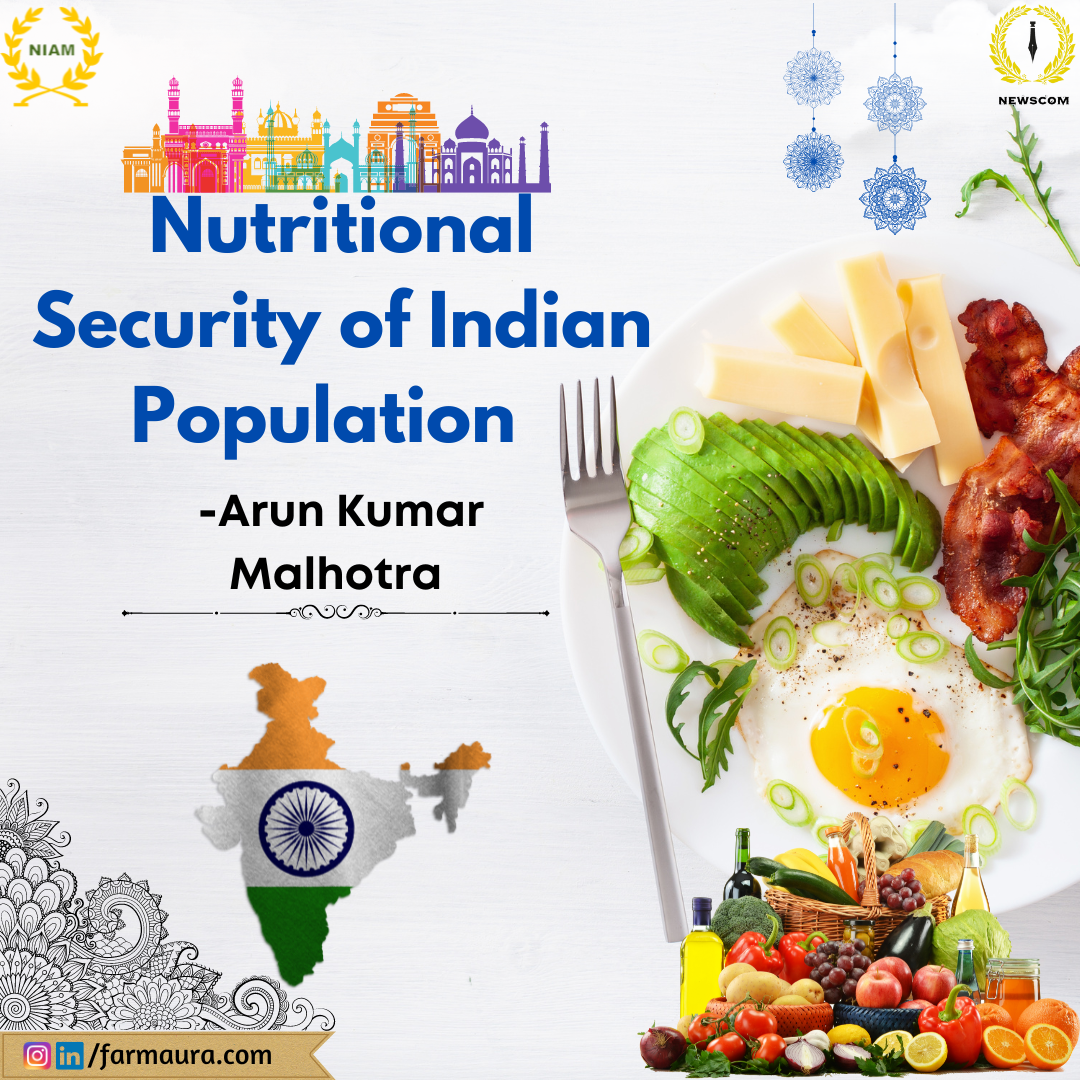Nutrition security, according to the FAO, entails “physical, economic and social access to a balanced diet, clean drinking water, a safe environment, and preventative and curative health care for every individual.” One of the most important health issues impacting 809.9 million people globally is undernourishment, which is defined as the failure to meet the basic nutritional requirements expressed in terms of daily calorie consumption. Even though there is enough food produced by agriculture for everyone, two billion people worldwide still experience moderate to severe food insecurity. India produces enough food grains on its own, but despite this, it has the most undernourished people in the world i.e. 24 per cent of the world population. Around 14% of India’s overall population was undernourished from 2016 to 2018. (This percentage is based on the country’s own population. Additionally, India has the highest rates of wasted (51%) and stunted children (31%) in the world).
Prevalence of Stunted and Wasted Children under 5 Years of Age across Countries, 2018

Food Security and Nutrition Programmes
The National Food Security Act (NFSA), which the government is implementing at the national level, provides food grains (wheat and rice) to about 813 million people, or 67% of the population, who live in India (the largest food-based programme in the world). The 36 states and UTs are all putting the plan into practise.
In an effort to lower the rate of stunting, undernutrition, anemia, and low birth weight infants, the government created National Nutrition Mission (now known as POSHAN-Abhiyaan). The government has set goals for the POSHAN Abhiyan to eliminate stunting, undernutrition, anemia (among young children, mothers, and teenage girls), and low birth weight by 2%, 2%, 3%, and 2% every year, respectively.
Way Forward for Nutritional Security
Crop Diversification
Food security depends on there being enough food available. While India is largely self-sufficient in cereals, there is a shortage of more nutrient-dense foods including coarse grains, pulses, fruits, and vegetables. To produce these crops and other products in which we are lacking, there is a need to broaden crop diversity and enhance related activities.
Improved Varieties
Lesser yields are a result of farmers in some areas being unable to obtain information about the availability of new and improved varieties, as well as quality seeds for these types. By creating a nationwide network to monitor and coordinate the operations with numerous State government officials who are engaged in crop production, this scenario needs to be rectified.
Smart Crops
Future “smart” crops are more nutrient-dense than traditional food crops. More macro- and micronutrients are provided, less outside input is needed, and they are well adapted to harsh and severe climatic conditions.




